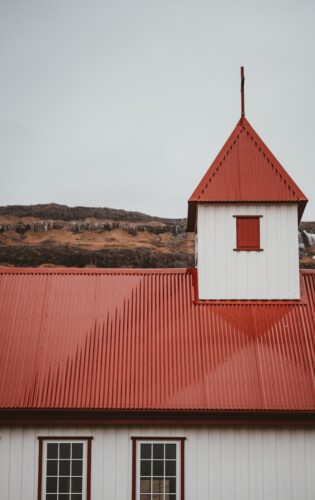Creating a safe environment for your business is crucial. The roof, an often overlooked but essential component of your commercial structure, plays a significant role in protecting your assets, employees, and customers. Investing in a quality roofing system and regular maintenance can make a substantial difference. In this article, we will explore effective strategies for enhancing your commercial roofing’s safety and longevity, ensuring that your business is well-protected against the elements.
Professional Checks
Ensuring your commercial roof remains in good condition starts with professional inspections. Regular checks by qualified roofing professionals can identify potential issues early, preventing costly repairs in the future. As maintenance specialists recommend, the team behind
https://greentekps.com/commercial-roofing/port-charlotte/ says that these inspections should occur at least twice a year, ideally in the spring and fall. During an inspection, professionals will assess the overall condition of the roof, checking for signs of wear and aging, damage from debris, and potential leaks.
They will verify that all drainage systems are functioning correctly, as clogged gutters and drains can lead to significant water accumulation, causing leaks and structural damage. Professional inspections not only help in the early identification of problems, but they can also provide essential advice on how to maintain the roof over time. Armed with this knowledge, business owners can extend the life of their roofing systems while ensuring their safety standards are upheld.
Understand Your Roofing Materials
Every roofing material has its unique set of properties, and understanding these can help you better maintain your roof. Common commercial roofing materials include TPO, PVC, EPDM, and built-up roofing. Each of these materials has distinct life expectancies and maintenance requirements. For example, TPO roofs, known for their energy efficiency and cost-effectiveness, have a life span of about 20 years but require regular maintenance to avoid UV-related damage. On the other hand, EPDM roofs are highly durable and can last up to 50 years with appropriate care. Knowing the strengths and weaknesses of your chosen roofing material allows you to tailor your maintenance routine effectively, ensuring your roof provides reliable protection throughout its life cycle.
Ensure Proper Drainage
Proper drainage is vital for maintaining the integrity of your commercial roof. When water accumulates on the roof, it can lead to severe structural damage, leaks, and even mold growth. To mitigate these risks, ensure that your drainage systems are well-maintained and free from obstructions. Regularly cleaning gutters and downspouts is essential, as debris can quickly accumulate and block water flow. Roof drains should also be inspected frequently. Depending on the design of your roofing system, employing a qualified roofing contractor to perform regular inspections and cleanings can bulk up your drainage management program significantly.
Invest in Quality Repairs
When problems are identified, dealing with them promptly and effectively is crucial. Cheap, temporary fixes might seem appealing but can lead to greater expenses in the long run. Investing in quality repairs ensures that the underlying issues are addressed and that the roof is restored to its optimal condition. Choosing a reputable contractor for repairs is crucial. Look for experts with a solid track record and positive reviews from other business owners within your area. This can help to ensure that the repairs are done correctly and in compliance with local building codes.
Implement a Maintenance Schedule
A well-planned maintenance schedule can help to prolong the life of your roof significantly. Once you understand the needs of your roofing materials and the regional climate’s effects, create a customized plan that outlines necessary routine check-ups, cleaning sessions, and repairs. Regular maintenance not only helps to identify problems before they escalate but also offers peace of mind that your roof remains in good condition. Consider looking back over the past repairs to identify patterns. Are there common issues that crop up annually? Addressing these recurrent concerns can lead to more significant savings over time.
Be Mindful of Weather Conditions
Weather conditions play a vital role in the lifespan and durability of your roof. Extreme weather — whether it’s heavy rains, snow, or intense heat — can lead to premature wear and tear. Understanding the specific weather patterns in your area enables you to prepare more effectively. When severe weather is forecasted, checking the roof for loose materials or damage is advisable. Taking preventive measures, such as securing loose fixtures, can help minimize damage during storms. Depending on the climate, you may also need to take additional steps like applying coatings to reflect sunlight during summer months and maintaining energy efficiency.
Train Employees on Roof Safety
Educating your employees on roof safety is often an overlooked aspect of commercial roof maintenance. If anyone needs to access the roof, whether for emergency repairs or inspections, they should understand safety protocols and appropriate measures. Instructing your team on essential practices, such as using proper equipment and wearing safety gear, will help minimize accidents and create a safer work environment. In addition, it can be beneficial to establish clear communication channels among staff about when roof access is needed and ensure that emergencies are reported immediately. Ensuring everyone is educated about safety precautions creates a culture that values safety in the workplace.
Consider Upgrading Your Roof
As materials and technologies progress, upgrading your roof can lead to improved safety and efficiency. An old roof may not meet current safety standards, creating hazards for your employees and clients. Consider alternatives such as roofing materials with better insulation, durability, and energy efficiency. Modern advancements may provide advantages such as improved UV protection, lighter materials that reduce the load on your structure, and enhanced design options that align with your company’s aesthetic. Investing in a new roofing system might require a substantial upfront cost, but the long-term benefits are often invaluable in terms of safety, aesthetics, and efficiency.
Maintaining a safe and secure environment for your business hinges significantly on your commercial roofing’s condition. By implementing these tips, you’ll enhance your roof’s longevity and performance while ensuring safety for everyone who interacts with your building.

